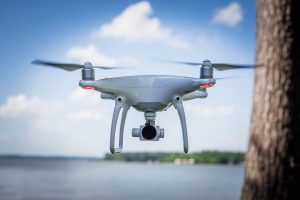 The U.S. Federal Aviation Administration (FAA) is urging drone operators to stay away from naval bases. Granted, the FAA has prohibited operators from flying drones in and around restricted military airspace. But not all operators are complying with this rule, and the FAA is warning operators that their drones could be shot down if they pilot their drones in restricted military airspace.
The U.S. Federal Aviation Administration (FAA) is urging drone operators to stay away from naval bases. Granted, the FAA has prohibited operators from flying drones in and around restricted military airspace. But not all operators are complying with this rule, and the FAA is warning operators that their drones could be shot down if they pilot their drones in restricted military airspace.
The FAA specifically cites two U.S. naval bases that have recently encountered unauthorized drones in their airspace: The Naval Base Kitsap and the Naval Submarine Base Kings Bay. In recent months, these two naval bases have reported unauthorized drones operating in their airspace. As a result, the FAA is warning drone operators to stay away from naval bases as well as Navy and Coast Guard vessel in the surrounding area.
Currently, drone operators are required to maintain at least 3,000 feet of horizontal clearance space and 1,000 feet of vertical clearance space from naval vessels. If an operator violates this rule by flying his or her drone closer to a naval vessel, the FAA says that the Navy has the authority to take “protective action.”
“The FAA, in cooperation with DOD and USCG, is restricting drone flights near U.S. Navy (USN) and USCG vessels operating in the vicinity of Naval Base Kitsap in Washington state and Naval Submarine Base Kings Bay in Georgia. Drone operations are required to maintain a distance of at least 3,000 feet laterally and 1,000 feet vertically from these vessels,” wrote the FAA in a press release.
Why is the FAA considered about unauthorized drones flying over naval bases? It’s obviously a safety hazard for the countless men and women of the U.S. Navy and Coast Guard. Furthermore, it poses security risk, as drones could be used by hostile forces for the purpose of gathering data on naval bases and vessels.
Drones have become increasingly popular in recent years. According to Nextgov, more than 1 million drones have been registered with the FAA — a number that’s expected to increase in the years to come. While most drones are used for recreational and leisure purposes, some are piloted for commercial purposes. Professional photographers, for example, often use drones to capture aireal footage from a bird’s-eye perspective, whereas commercial construction companies use drones to survey landscapes and inspect machinery. As more and more Americans use drones, we’ll likely see an increasing number of airspace violation reports. This has prompted the FAA to take action by issuing new warnings to drone pilots, such as keeping their drones away from naval bases.



